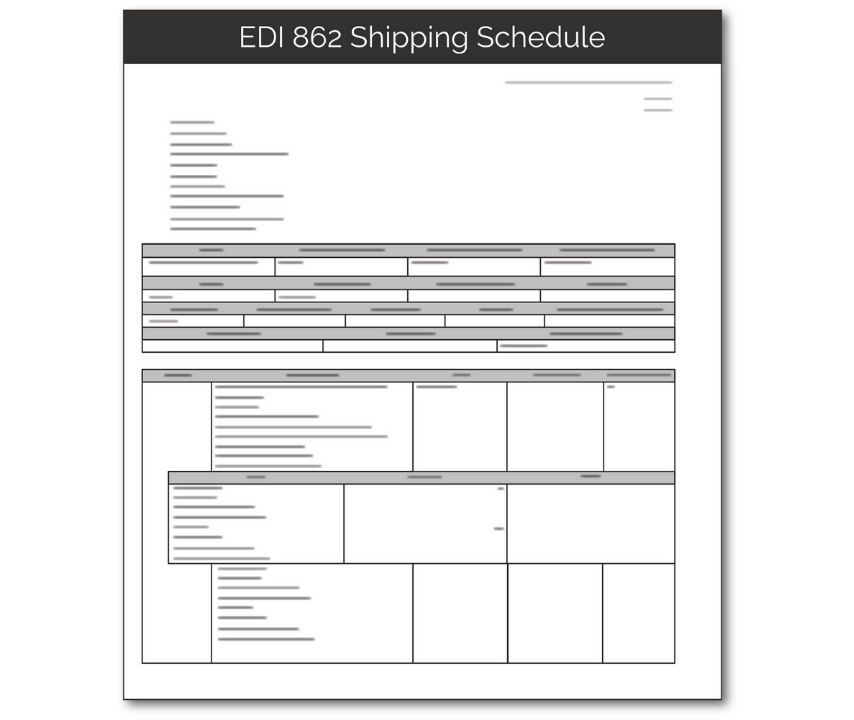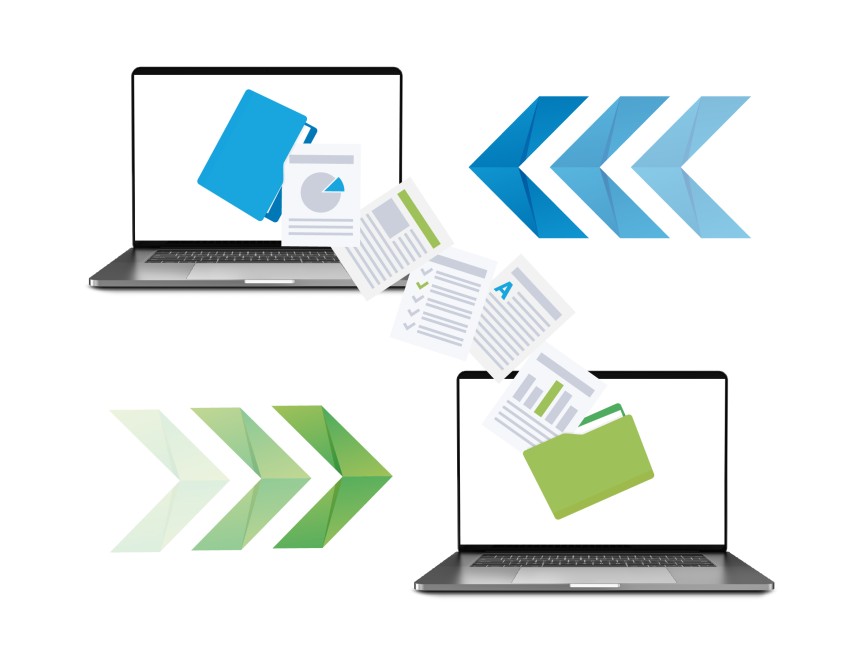EDI 862
Shipping Schedule

What is an EDI 862?
EDI 862 is an electronic data interchange document that is used in just-in-time manufacturing to often supplement an existing EDI 830 Planning Schedule with Release Capability. This document is sent by a manufacturer or buyer to another manufacturer or wholesaler when they need to change or update the shipping instructions in an EDI 830 schedule or to convey a shipping schedule that spans over a period of days, weeks, or months.
EDI 862 documents follow the x12 format set by the American National Standards Institute (ANSI), a not-for-profit organization that regulates EDI formats in the U.S.
What are the Essential Components of EDI 862?
EDI 862 transaction sets include much of the same information as EDI 830 documents, but the information on EDI 862 can supplement EDI 830. EDI 862 can indicate changes in the order quantity, as well as the ship date. Key elements in an EDI 862 transaction include:
- Buyer and vendor identification details
- Ship from/to addresses
- Product descriptions and SKUs/UPCs
- Shipping/delivery instructions
- Packing and loading specifications
- Details on firmed and planned shipping schedules
- Additional details on the sequencing of products

How do I Use EDI 862?
Traditionally, manufacturers use EDI 830 to forecast their needs and let their manufacturing partners know when they’ll need replenishment. EDI 830 can also authorize those manufacturers to fulfill orders automatically based on the buyer’s specifications. Buyers will usually send EDI 830 documents on a periodic basis, such as weekly or quarterly.
However, sometimes inventory needs can change quickly, such as in just-in-time manufacturing. When this happens, the buyer can use EDI 862 to supersede the instructions on the existing EDI 830 document. As schedules continue to adjust, the buyer can send further EDI 862 documents to make more changes. The most recently sent EDI 862 overrides previous 862 documents for a given order/shipment.
While EDI 830 transactions help manufacturers forecast need, and manage their inventory for appropriate availability, EDI 862 documents provide instructions based on more frequent, immediate needs. Together, they help improve on-hand inventory for manufacturers.
After receiving an EDI 862 document, the manufacturer will respond with an EDI 997 Functional Acknowledgement.

What are the Benefits of EDI 862?
EDI 862 helps increase supplier collaboration by supplementing EDI 830 and giving manufacturers better visibility into a manufacturer’s replenishment needs. Additionally, EDI 862 can create a virtual “paper trail” for manufacturers, to help them track changes to replenishment orders, for later reconciliation. Sending Shipping Schedules via EDI also eliminates the need for manual data input, helping to save time and accelerate replenishment efforts.
EDI 862 documents can be automated to send according to pre-defined business rules, helping to further increase ordering efficiency. For example, a business may issue an EDI 862 document automatically when their inventory falls below a certain threshold. In doing so, they can tell the manufacturer they need a shipment immediately, without needing a team member to manually evaluate stock availability and initiate a replenishment order.


